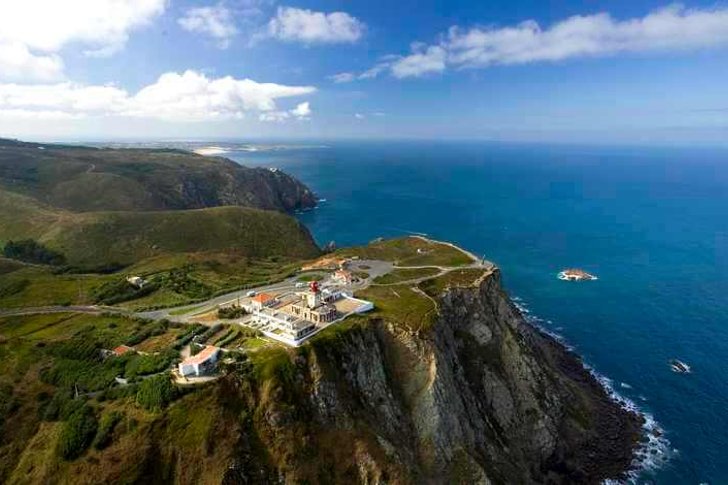The Portuguese town of Sintra all consists of magnificent palaces, exotic parks and picturesque natural landscapes. From here, the famous Cape Roca and the Sintra-Cascais National Park are within easy reach. The city is 27 km. from the Portuguese capital, so getting there is quite easy.
Sintra has a milder climate due to the proximity of the ocean, a calmer and more peaceful atmosphere, and the abundance of historical monuments and a large flow of tourists do not seem to disturb the peaceful flow of provincial life at all. Since the 12th century, the city has been the summer residence of the Portuguese aristocracy. People came here to enjoy nature and clean sea air, think about the meaning of life and calm their nerves.
What to see and where to go in Sintra?
The most interesting and beautiful places for walking. Photos and a short description.
Pena Palace
In the 16th century, on the site of the palace, there was a monastery built in honor of the birth of the heir to King Manuel I. But the monastery was destroyed by an earthquake in 1755. Only the chapel and the altar survived. In 1840, a palace began to be built on the site of the ruins, which was later used as a royal residence. The architectural complex is surrounded by a magnificent landscape park with exotic vegetation.
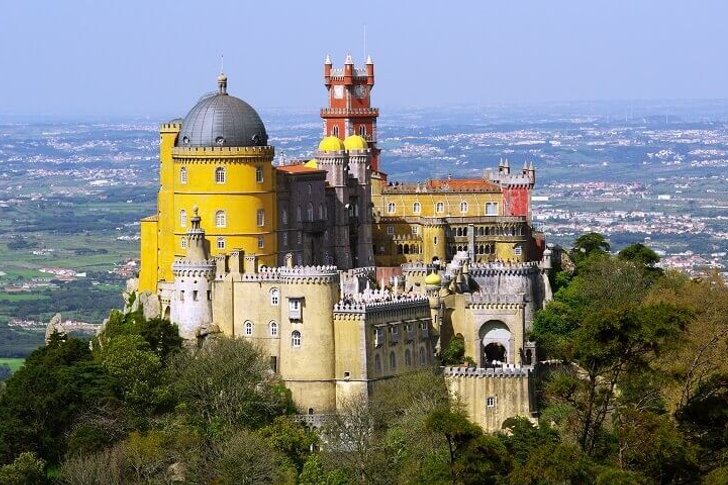
National Palace of Sintra
The palace complex was erected under the ruler Joan I in the 14th century and rebuilt in a pseudo Moorish manner under Manuel I. The walls of the building are decorated with unique Seville tiles of the 15th-16th centuries. The interior of the palace is quite modest, of particular interest are the carved wooden ceilings, made in the Arabic style. The complex was declared a national monument at the beginning of the 20th century.

Quinta da Regaleira
A park complex with a neo-Gothic palace, one of the most visited attractions in Portugal. Previously, the estate belonged to a member of the Masonic lodge and millionaire Monteiro. According to his idea, the architecture of the palace and park design had to meet his philosophical ideas about life. As a result, a project was implemented in which styles, unusual fantasies and whims of an eccentric mason were mixed.
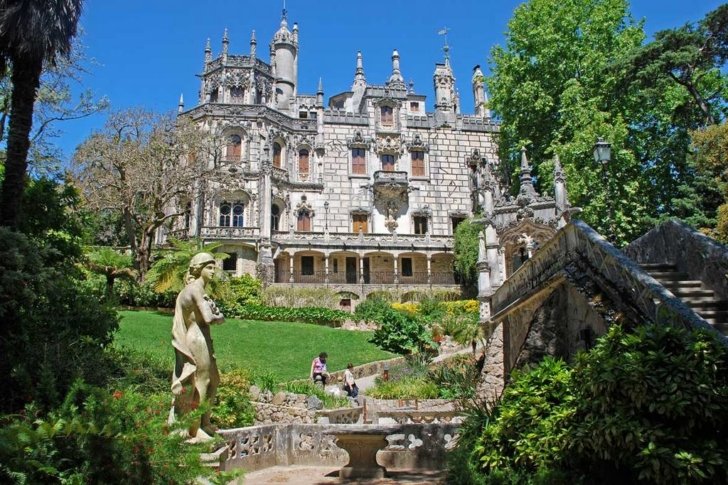
"Well of Initiation"
In the park of the Quinta da Regaleira complex there is an amazing place that is wildly popular with tourists. This is a wide well, a stone "underground tower" with stairs and arches, built in accordance with the ideas of the Masonic teachings about the structure of the Universe. The “well of initiation” is an allegorical staircase connecting heaven and earth, at the bottom a person is in darkness, and at the top he knows the light and goodness of spiritual knowledge.
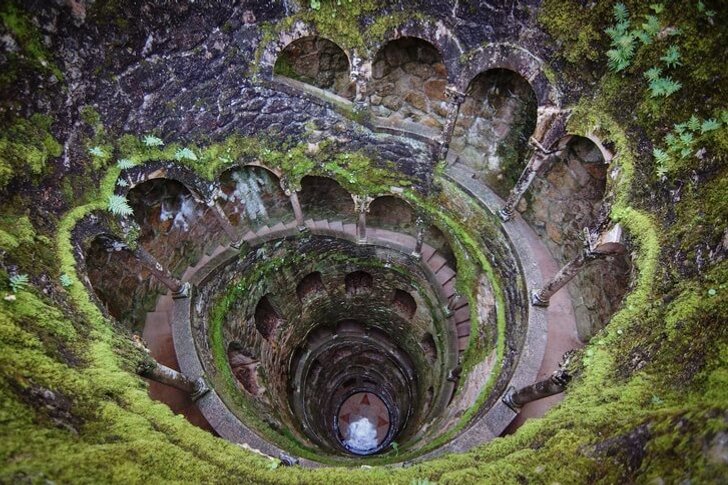
Moors castle
The castle stands on top of the Serra da Sintra and is surrounded by a picturesque landscaped park. The construction was erected in the VIII century, when the entire Iberian Peninsula was under the rule of the Arab conquerors. In the XII century, the fortification went to the Portuguese. Until the complete expulsion of the Moors, the castle served as a defensive function. After the earthquake of 1755, the building lay in ruins for a long time, restoration took place in the 19th century, but the castle lost its historical appearance.
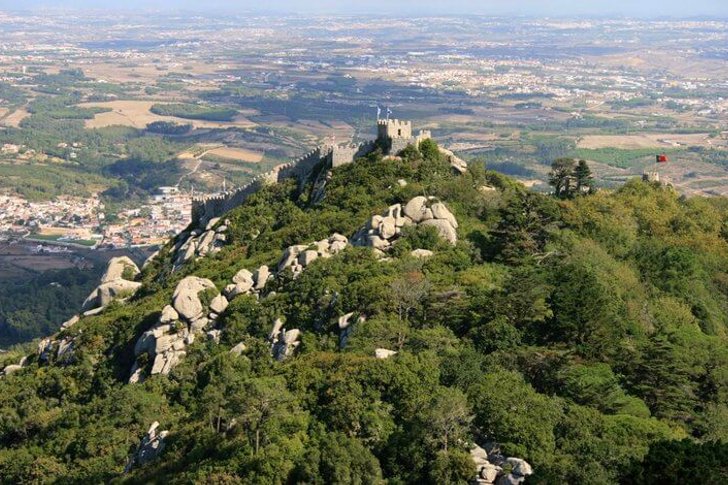
Montserrat Palace
The history of the building dates back several centuries, the last serious restoration took place in the middle of the 19th century by order of the English industrialist and millionaire F. Cook. The palace is a whimsical and harmonious interweaving of several architectural styles, with Indian and Moorish influences in the interior and exterior. In the middle of the 20th century, the complex passed into the possession of the state and became available for visiting.

Monastery of the Capuchins
The monastery is located on the territory of the Sintra-Cascais National Park. It was founded in the 16th century and existed until the 19th century (until the order to dissolve the monastic orders). Nowadays, the monastery has fallen into decay, and is gradually being destroyed - the walls are overgrown with ivy and moss, only facades remain of the buildings. The monastery complex is located in a rather secluded and remote place, which can only be reached by car or on foot.

Chalet of the Countess of Edla
The mansion was built at the request of the second wife of King Fernand II - Eliza Hensler, Countess of Edla. She remained in the memory of the Portuguese as an artist, actress, singer, architect and botanist. Her cozy chalet is nestled among the lush vegetation of Pena Palace Park. In 1999 there was a big fire, as a result of which the back was destroyed. In 2011, after a partial restoration, the place became available for visiting again.
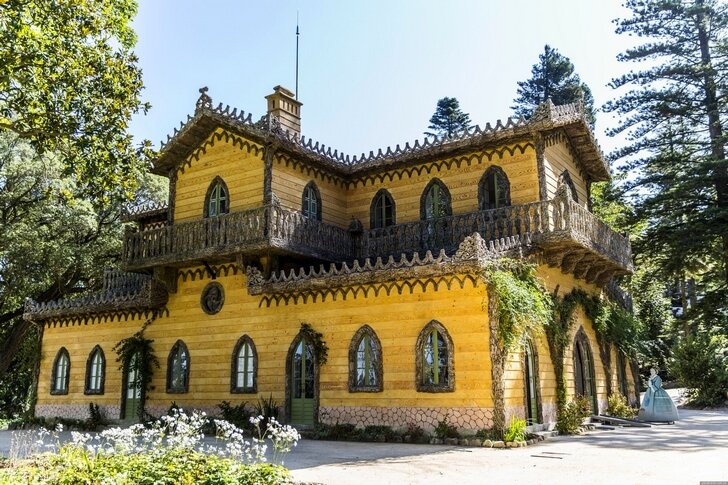
Tram in Sintra
The tram runs on a 13-kilometer line from Sintra to the city of Praia das Masans. It makes eight stops along the way. The line was built in 1904 and eleven historic tram cars run regularly on it. The tram is mainly used as a tourist attraction. For more than 100 years of existence, the line has been repeatedly closed due to lack of funding for modernization.

Cape Roca
The extreme point of the Eurasian continent is 18 km. from Sintra. The cape is located on the territory of the Natural National Park of Sintra-Cascais. The place is a rock towering 140 meters above the ocean; it has always been fanned with legends and a romantic halo. A lighthouse is installed on the cape and there is a small souvenir shop where for a few euros the traveler will be given a certificate of visiting the westernmost point of Europe.
